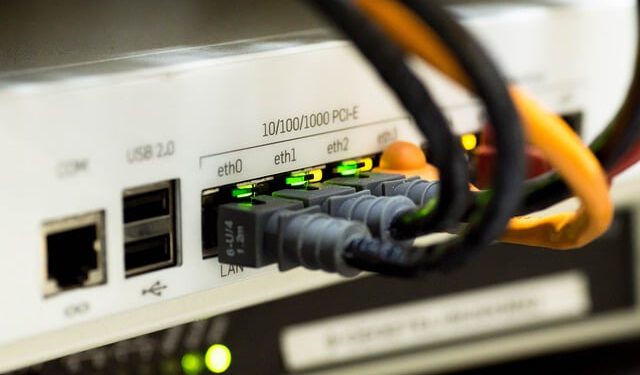While Ethernet offers a stable and fast connection, ideal for bandwidth-demanding tasks, WiFi seduces with its convenience and flexibility. This article guides you through the essential characteristics of these two technologies, focusing on their speed, reliability, ease of installation and safety. Our goal is to help you determine which connection is the most suitable for your needs, whether for personal or professional use.
Understand the basics: Ethernet and Wifi
The decision between using an Ethernet or WiFi connection depends on many factors, including your needs in terms of speed, stability and mobility. Ethernet provides a reliable and fast connection thanks to its direct cable, which makes it an ideal choice for activities requiring high bandwidth and constant stability, such as online games, streaming high definition videos, or downloading large files. This method ensures a secure connection and is less prone to interference.
On the other hand, the Wifi offers great freedom of movement, allowing to connect several devices without the constraints of cables. Although it is generally more susceptible to interference and perhaps less efficient in terms of pure speed, WiFi is perfect for daily browsing, social media, and light online tasks on mobile devices.
It is interesting to note that regardless of the type of your internet subscription, whether it is a no-obligation internet offer from a low-cost operator or a more traditional contract, modern boxes provide both Ethernet ports and WiFi functionality. This allows you to choose or change your connection method according to your specific needs.
Speed and reliability: performance comparison
The speed and reliability of an internet connection depend significantly on the choice between Ethernet and WiFi. Technically, Ethernet has an inherent advantage in terms of raw speed. This is due to its direct physical connection, which minimizes signal losses and latencies. In practice, Ethernet can support speeds of up to 10 Gbps with Cat6 cables, or even more with newer versions. This capability makes Ethernet an undeniable choice for applications requiring high-speed data transfers.
The Wifi, on the other hand, operates over a range of radio frequencies, with speeds that depend on the standard used (for example, 802.11ac or 802.11ax). Although the latest WiFi standards offer high theoretical speeds, in practice they are often affected by environmental factors such as distance from the router, obstacles, and interference from other wireless devices. In addition, the ability of a WiFi network to manage several devices simultaneously can also impact its overall performance.
In terms of reliability, Ethernet offers a more stable connection due to its immunity to RF interference (radio frequencies) and other environmental disturbances, while WiFi may experience fluctuations in quality due to these same factors. However, with technologies such as beamforming and MU-MIMO, modern WiFi networks are improving in terms of interference management and efficient signal distribution.

Easy installation and flexibility
The practicality of installation and configuration is a key element in choosing between Ethernet and WiFi. Ethernet, although offering a reliable and fast connection, requires a more elaborate installation. This often involves the passage of cables through rooms or along walls, and may require additional work, especially in large houses or offices. For those looking for a plug-and-play solution, this requirement can represent a significant disadvantage.
On the other hand, WiFi shines for its ease of installation and flexibility. Setting up a WiFi network is relatively simple, often requiring only a wireless router and a few basic configurations. This simplicity allows an almost immediate use and the ability to connect a multitude of devices without physical constraints. In addition, the wireless nature of WiFi offers unparalleled mobility, allowing users to stay connected in different rooms or areas without worrying about cables.
Safety and practical considerations
Security is a crucial aspect in choosing between Ethernet and WiFi. Ethernet connections are inherently more secure due to their wired nature. Accessing an Ethernet network requires physical access to the cable or network socket, which significantly limits the risks of unauthorized intrusions. In addition, Ethernet networks are less susceptible to the types of attacks that affect wireless networks, such as sniffing or man-in-the-middle type attacks.
On the other hand, WiFi networks, while being practical, are more vulnerable to intrusions due to their wireless nature. This requires robust security measures, such as WPA3 encryption, careful password management, and hiding the SSID to prevent unauthorized access. In addition, maintaining the security of a WiFi network involves regular updates of the router’s firmware and constant monitoring of connected devices.
Our blog is powered by readers. When you purchase through links on our site, we may collect an affiliate commission.








